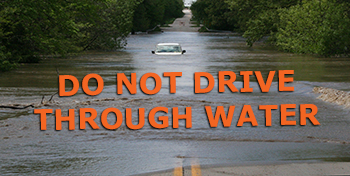The Importance of Real-Time Weather Monitoring
Real-time weather monitoring plays a crucial role in modern society, providing up-to-the-minute data on atmospheric conditions that can impact various aspects of our lives. From agriculture and transportation to emergency response and outdoor activities, access to accurate and timely weather information is essential for making informed decisions and ensuring safety.
Benefits of Real-Time Weather Monitoring
One of the key benefits of real-time weather monitoring is the ability to track rapidly changing weather patterns. By collecting data from weather stations, satellites, and other sources in real time, meteorologists can analyze current conditions and predict future developments with greater accuracy.
For farmers and agricultural businesses, real-time weather monitoring helps optimize crop management practices by providing insights into precipitation levels, temperature fluctuations, and other factors that influence plant growth. This information allows farmers to make informed decisions regarding irrigation, fertilization, and pest control.
In the transportation sector, real-time weather data is vital for ensuring safe travel conditions. By monitoring factors such as visibility, wind speed, and precipitation levels in real time, transportation agencies can issue timely warnings and advisories to drivers, pilots, and other travelers to prevent accidents and delays.
The Role of Technology in Real-Time Weather Monitoring
Advancements in technology have revolutionized the field of real-time weather monitoring. Automated weather stations equipped with sensors can collect data on temperature, humidity, air pressure, wind speed, and other variables at frequent intervals throughout the day.
Satellite imaging technology allows meteorologists to observe large-scale weather patterns from space in real time, providing a comprehensive view of global weather systems. Doppler radar systems enable the detection of severe weather phenomena such as thunderstorms, tornadoes, and hurricanes with high precision.
Conclusion
In conclusion, real-time weather monitoring plays a vital role in safeguarding lives and property by providing accurate and timely information on atmospheric conditions. By leveraging advanced technology and data analysis techniques, meteorologists can track weather patterns more effectively than ever before. Whether it’s for agriculture, transportation, emergency preparedness or everyday planning, access to real-time weather information empowers individuals and organizations to make informed decisions in a dynamic environment.
7 Benefits of Real-Time Weather Monitoring: Enhancing Safety, Efficiency, and Awareness
- Timely alerts for severe weather events like storms and hurricanes
- Enhanced safety for outdoor activities by providing up-to-date weather forecasts
- Optimized agricultural practices through real-time data on precipitation and temperature
- Improved transportation efficiency with accurate information on road and air conditions
- Better emergency response planning based on current weather conditions
- Increased awareness of environmental changes and climate trends
- Efficient energy management by adjusting usage based on real-time weather patterns
Challenges of Real-Time Weather Monitoring: Costs, Privacy, and Data Management
- Costly to implement and maintain advanced real-time weather monitoring systems.
- Reliance on technology can lead to disruptions in data collection during technical failures.
- Privacy concerns may arise due to the collection of location-specific weather data in real time.
- Data overload from continuous monitoring can make it challenging to interpret and prioritize information effectively.
- Accuracy issues may occur, especially in extreme weather conditions or remote areas with limited monitoring infrastructure.
Timely alerts for severe weather events like storms and hurricanes
Real-time weather monitoring provides a critical advantage in delivering timely alerts for severe weather events such as storms and hurricanes. By continuously tracking atmospheric conditions and utilizing advanced technology like Doppler radar systems, meteorologists can quickly detect the formation and movement of dangerous weather systems. This proactive approach allows authorities to issue warnings well in advance, giving individuals and communities valuable time to prepare, evacuate if necessary, and take appropriate safety measures to mitigate the impact of these potentially devastating events.
Enhanced safety for outdoor activities by providing up-to-date weather forecasts
Real-time weather monitoring enhances safety for outdoor activities by providing up-to-date weather forecasts. By accessing real-time data on changing weather conditions, outdoor enthusiasts can make informed decisions about their plans and take necessary precautions to stay safe. Whether it’s hiking, camping, boating, or any other outdoor adventure, having accurate and timely weather forecasts helps individuals avoid potentially dangerous situations such as sudden storms or extreme temperatures. This proactive approach to monitoring weather conditions ensures that outdoor activities can be enjoyed with greater peace of mind and reduced risk of weather-related incidents.
Optimized agricultural practices through real-time data on precipitation and temperature
Real-time weather monitoring offers a significant advantage to agricultural practices by providing precise data on precipitation and temperature. With access to up-to-the-minute information on these crucial factors, farmers can make informed decisions to optimize their crop management strategies. By adjusting irrigation schedules, fertilization plans, and pest control measures based on real-time weather data, farmers can enhance crop yields, reduce water usage, and minimize the impact of adverse weather conditions on their harvests. This proactive approach enabled by real-time monitoring ultimately leads to improved efficiency and sustainability in agricultural operations.
Improved transportation efficiency with accurate information on road and air conditions
Real-time weather monitoring significantly enhances transportation efficiency by providing precise and timely information on road and air conditions. With up-to-the-minute data on factors such as visibility, wind speed, precipitation levels, and temperature fluctuations, transportation agencies can proactively manage traffic flow, optimize route planning, and ensure the safety of travelers. By leveraging accurate weather information, drivers, pilots, and other transportation professionals can make informed decisions that lead to smoother operations, reduced delays, and enhanced overall efficiency in the transportation sector.
Better emergency response planning based on current weather conditions
Real-time weather monitoring enables better emergency response planning by providing crucial, up-to-date information on current weather conditions. This real-time data allows emergency responders to assess the situation accurately and make informed decisions on resource allocation, evacuation procedures, and disaster response strategies. By leveraging real-time weather information, authorities can anticipate potential hazards, such as severe storms or flooding, and take proactive measures to mitigate risks and ensure the safety of individuals in vulnerable areas. The ability to tailor emergency plans based on the latest weather updates enhances preparedness and response capabilities, ultimately saving lives and minimizing the impact of natural disasters.
Increased awareness of environmental changes and climate trends
Real-time weather monitoring offers the valuable benefit of increased awareness of environmental changes and climate trends. By continuously tracking and analyzing weather data in real time, researchers and policymakers can gain deeper insights into long-term climate patterns, detect shifts in weather behavior, and identify potential impacts of climate change. This heightened awareness allows for more proactive measures to be taken in response to evolving environmental conditions, fostering a better understanding of our changing climate and facilitating informed decision-making for sustainable resource management and adaptation strategies.
Efficient energy management by adjusting usage based on real-time weather patterns
Efficient energy management is a significant benefit of real-time weather monitoring as it allows for the adjustment of energy usage in response to current weather patterns. By analyzing real-time data on temperature, humidity, and other weather variables, energy systems can optimize their operations to reduce waste and save costs. For example, during periods of high heat or cold, energy-intensive systems like heating, ventilation, and air conditioning (HVAC) can be adjusted based on real-time weather information to maintain comfort levels while minimizing energy consumption. This proactive approach not only improves energy efficiency but also contributes to sustainability efforts by reducing overall energy demand and carbon emissions.
Costly to implement and maintain advanced real-time weather monitoring systems.
Implementing and maintaining advanced real-time weather monitoring systems can be a significant financial burden for organizations and agencies. The costs associated with acquiring state-of-the-art weather monitoring equipment, installing infrastructure, and training personnel to operate and interpret the data can be substantial. Additionally, ongoing maintenance expenses, including calibration, upgrades, and repairs, add to the overall cost of running these systems. For some smaller entities or regions with limited budgets, the high expenses involved in setting up and sustaining advanced real-time weather monitoring systems may pose a barrier to accessing critical weather information in a timely manner.
Reliance on technology can lead to disruptions in data collection during technical failures.
One significant con of real-time weather monitoring is the reliance on technology, which can result in disruptions in data collection when technical failures occur. In cases where weather monitoring systems experience malfunctions or breakdowns, the flow of real-time data can be interrupted, leading to gaps in information and potentially impacting the accuracy of weather forecasts. This dependency on technology highlights the importance of implementing backup measures and contingency plans to ensure continuous and reliable data collection, especially during critical weather events when accurate information is paramount for decision-making and safety.
Privacy concerns may arise due to the collection of location-specific weather data in real time.
Privacy concerns may arise as a con of real-time weather monitoring due to the collection of location-specific weather data. With the ability to track individuals’ precise locations based on the weather information they access, there is a potential risk of data misuse or unauthorized tracking. This collection of personal data raises questions about privacy rights and the security of sensitive information, highlighting the need for transparent data practices and robust privacy protection measures in real-time weather monitoring systems.
Data overload from continuous monitoring can make it challenging to interpret and prioritize information effectively.
The continuous monitoring involved in real-time weather monitoring can present a significant challenge in the form of data overload. With a constant stream of information coming in from various sources, it can be overwhelming to interpret and prioritize the data effectively. Sorting through vast amounts of real-time data to extract meaningful insights and identify critical patterns can be a daunting task, potentially leading to delays or errors in decision-making processes. This con underscores the importance of implementing efficient data management strategies and analytical tools to streamline the interpretation of real-time weather information and ensure that key insights are not overlooked amidst the flood of data.
Accuracy issues may occur, especially in extreme weather conditions or remote areas with limited monitoring infrastructure.
In real-time weather monitoring, accuracy issues can arise, particularly in extreme weather conditions or remote areas with limited monitoring infrastructure. In such scenarios, factors like equipment malfunctions, data transmission errors, or insufficient coverage can lead to inaccuracies in the collected weather data. This lack of precise information poses challenges for making reliable forecasts and timely decisions, potentially impacting various sectors that rely on accurate weather information for planning and safety measures. Addressing these accuracy issues through improved monitoring technologies and expanded infrastructure coverage is essential to enhance the effectiveness of real-time weather monitoring systems.




